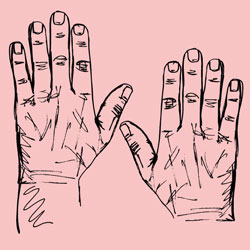Scientists in Israel have shown that non-biological chiral crystals are much more abundant than previously thought and their findings could clear up a possible confusion over the term 'chiral'.
'Chiral' describes an object whose mirror image cannot be superimposed, for example human hands are chiral. Chirality is important to understand and recognise, as the production of a chiral molecule can lead to both mirror images - or enantiomers - being produced, and these often have very different chemical properties. Chiral crystals selective for one enantiomer that could be used for separation or as catalysts are therefore highly sought.
 |
If scientists have underestimated the number of non-biological chiral crystals in existence, a fresh look at crystal databases could unearth many new chiral catalysts
|
Currently, chemists assume that approximately 10% of all non-biological crystals are chiral, as is the case with non-biological molecules. However, David Avnir and Chaim Dryzun at the Hebrew University of Jerusalem have studied the literature of crystals logged in crystal databases and have shown that the proportion of non-biological chiral crystals is actually as high as 23%. Jennifer Swift, a crystals expert at Georgetown University, US, says that the paper 'points out that the percentage of chiral solids is very much underestimated. This is a significant point to raise, since it helps draw attention to many solids whose chiral properties may have been inadvertently overlooked'.
The large underestimation of the number of non-biological chiral crystals may in part be due to confusion over the definition of chirality. Crystal chirality depends on the space group of a crystal; that is the group the crystal unit belongs to because of its symmetry. The team clarifies that some space groups are achiral but the crystals they form are always chiral due to the type of symmetry the space group has. Avnir says: 'It is quite astonishing that if a chemist will run a search for "chiral crystals" she/he will miss the mind-boggling number of about 100,000 chiral crystals out of ~130,000 chiral non-biological crystals'. He adds that 'there is a huge source of potentially chiral functional materials out there, waiting to be explored'.
In the future, the team intends to investigate why molecules form certain crystal structures. They hope to be able to explain why there are so many more non-biological chiral crystals than chiral molecules.
Source: Royal Society of Chemistry
No comments:
Post a Comment